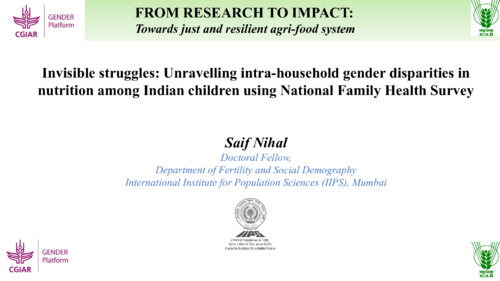Invisible struggles: Unraveling intrahousehold gender disparities in nutrition among Indian children using National Family and Health Survey
Abstract
India has witnessed advancements in socioeconomic and health indicators, yet the persisting issue of gender inequality is a significant challenge. Sonpreference and the deeply ingrained patriarchal structure of society is evident in health and nutritional outcomes (Mishra et al. 2004; Jose, 2017; Kennedy et al. 2020). A key determinant contributing to this gender inequality is the intrahousehold allocation of resources (Ramchandran, 2014). This study aims to investigate the intrahousehold sex differentials in the nutritional status of children during the first five years of life, through an intersectional approach. Using data from the fifth round of the NFHS, the study focuses on women who had given birth to a male and a female child within the five years preceding the survey. The findings reveal that 21% of women have a stunted female child but not a stunted male child, while 22% of households have a stunted male child. The gap widens when considering physiologic wasting, with 15% of female children being wasted compared to 19% of male children. The study further uncovers that if the first child is male, the prevalence of undernutrition is higher than if the child is female. If the second child is female, prevalence of undernutrition is highest. Differentials are not observed among women with higher education, greater wealth, living in urban areas, and are non-Hindu. This study marks the first-ever attempt to comprehend undernutrition within households based on the gender of children. It reveals that second-born female children are particularly vulnerable among socioeconomically disadvantaged groups, hindering progress toward achieving the SDGs by 2030.

